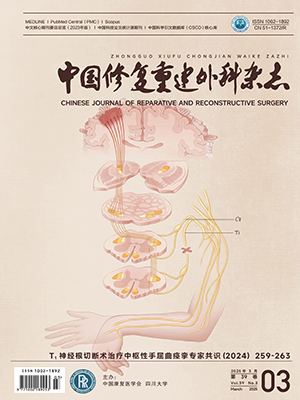Objective To evaluate the reliability and the advantageof canal laminoplasty with laminoplasty over laminectomy for treatment of lumbar spinal stenosis.Methods From June 2000 to September 2004, the titanium miniplate fixation technique was applied to re-implantation of the vertebral lamina in the lumbar spine. The vertebral lamina was made with a specially made osteotome and a special technique in 18 patients with lumbar spinal stenosis. Results The patients were followed up for 1 yr and 8 mon on average (range, 3 mon4 yr and 3 mon) and were observed to have a bony fusion of the re-implanted lamina 3-9 months postoperatively. There was no nonunion, displacement of the re-implanted lamina, overgrowth of the anterior bone edge of osteotomy, recompression of the nerves or instability of the lumbar spine. Conclusion The result demonstrates that canal laminoplasty with the titanium miniplate re-implantation of the vertebral lamina in lumbar spine can restore the normal anatomy, keep stability of the spine, and avoid adhesion and scar in the canal.
Citation: CHEN Liang,PANG Qingjiang,ZHANG Qianfa,et al.. CANAL LAMINOPLASTY WITH TITANIUM MINIPLATE REIMPLANTATION OF VERTEBRAL LAMINA. Chinese Journal of Reparative and Reconstructive Surgery, 2006, 20(4): 410-412. doi: Copy
Copyright © the editorial department of Chinese Journal of Reparative and Reconstructive Surgery of West China Medical Publisher. All rights reserved




